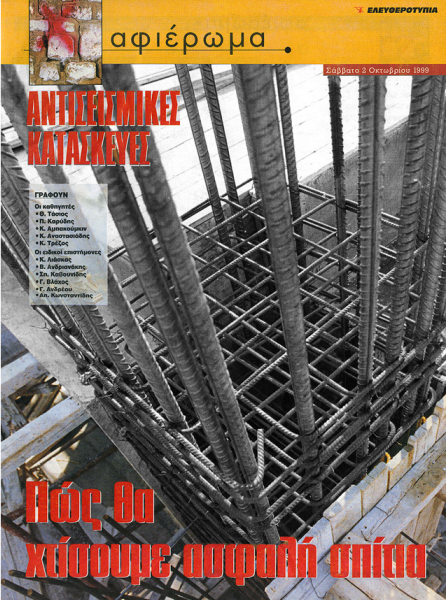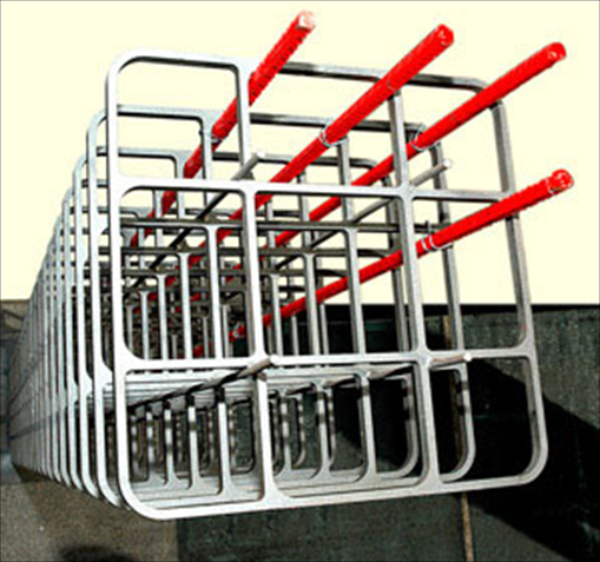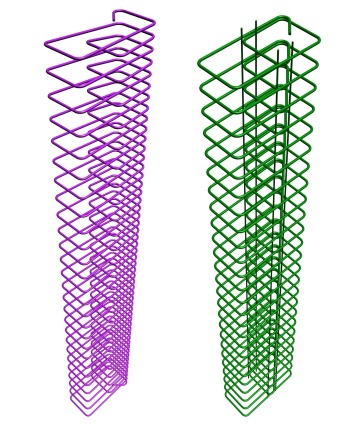1996
A new company is established by the shareholders ofωpi-Systems, aiming at the research and industrial implementation of innovative antiseismic technology. The goal of this company was to design automatic machines that would perform the 3D formation of steel stirrups (stirrup machines), and the fabrication of many type of stirrup sections, non-ending, multishape and spiral stirrups (Antiseismic Thorax) for the reinforcement of all kinds of columns, beams, shear walls and foundation structural elements.

Until today thousands of buildings have been constructed with Antiseismic Thorax, which have demonstrated an excellent earthquake resistant behaviour (as been proved during the destructive earthquake of the 20th September 1999)
1999
The definite advantage of antiseismic thoraces is certified experimentally by the reinforced concrete laboratory of the National Technical University of Athens. By 1999 they have been approved by the Greek Antiseismic Regulation authority, with the significantly propitious aperture coefficient.
2000
The production rights for Greece are transferred over to BITROS group.
2004
Next generation of earthquake resistant stirrups, Cellular stirrups, designed and patented to have absolute industrial accuracy for precasting purposes, using advanced metallurgy methods and new composite materials.

Cellular Stirrups” fulfil all traditional stirrups specifications and perform all spiral stirrups specifications because (a) have not weak points and (b) secure the continuity flowing of tension or compression stresses with the same way as the spiral stirrups do.
2000 to 2007

The industrial earthquake resistant stirrups Thoraces TM, SIDEFOR TM and Forsteel TM, were successfully established through StereoSTATIKA and HoloBIM software in Greek market. A lot of 2004 Olympic structures in Athens have used these stirrups.